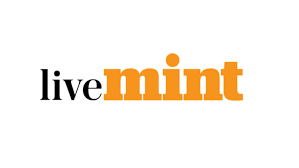
- November 17, 2020
- Uncategorized
- No Comments
The dichotomy between markets and economy
Yes, there is a dichotomy between markets and the economy. There usually is in the short-term. Markets look ahead while the economy looks backwards. The stark opposite movement of the Nifty and the economy during this pandemic just brought this to the fore. Needless to say, it was glaring.
The market capitalization to GDP ratio is above the historical average of 75%. Nifty P/B (price to book ) value is at the 10-year average of 3 times. These ratios are telling us that the ‘market’ is fairly priced. If you look a little deeper, it is the top 5 stocks in Nifty that have significantly outperformed the balance 45. There is polarization. This seems to be a phenomenon not only in India. If I pick up NASDAQ 100, a similar trend can be seen. In the past decade there is a 60% contribution to the return of the index by the now famous FAANG stocks (Facebook, Amazon, Netflix, and Alphabet (formerly Google)).
So is the market going to rally ? Is Nifty going to touch new highs? Well, the market is never a function of the economy alone. It depends on sentiments and liquidity as well. However, it evens out in the long run. What that means is that for the rally to sustain and not enter a bubble zone, our economy must now pick up.
Is it likely to pick up ? Most estimates for FY2022 are very bullish. The Finance Ministry said that the GDP could grow by 19% in nominal terms. In its forecast in September, Moody’s Investors Service had projected a 10.6% real GDP growth. IMF has projected a GDP growth rate of 10.3% for FY22. But let us not forget that after a contraction in the economy and from a lower base, these numbers are not as stellar as they look at first glance.
Coming now to the question of the revival of the economy. It depends on how soon normalcy can return. This in turn depends of how fast a medical solution is not just found but also implemented. What I can do for you here is tell you that the initial indicators are looking positive and reassuring.
Purchasing Manager’s Index (PMI) is an indicator of business activity in the economy. It indicates the ‘health’ of manufacturing and service businesses by assessing variables as new orders output, employment, supplier deliveries, inventories, new export orders etc. A PMI of 58.9 for October indicates an expansion in business activity and has been seen very favourably by analysts. Similarly the Services PMI is also showing a bounce back. E-way Bills and Goods and Service Tax (GST) collection are also indicator of the health and business activity of the economy. GST collection crossed ₹1 lakh crore mark for first time since February 2020. Data on E-way bills is also positive. Unemployment in India is now lower than it was before the pandemic. The second quarter results declared so far are encouraging.
To summarise, the initial indicators of economic revival are encouraging on the supply side. Demand for goods and services still needs to pick up and sustain beyond the festive season. As things stand today, one would be positive on the outlook for the economy and therefore hope that the gap between economic performance and markets perception of it will narrow down.
